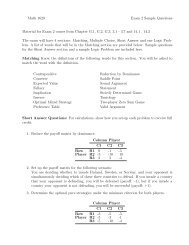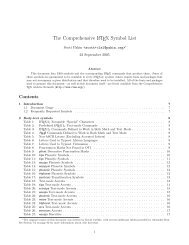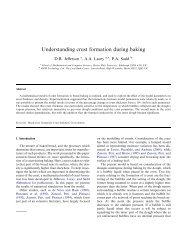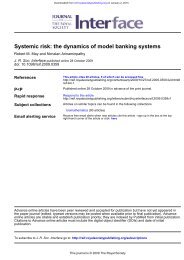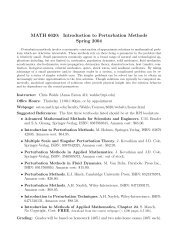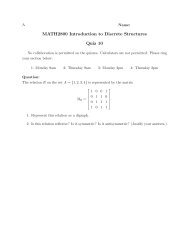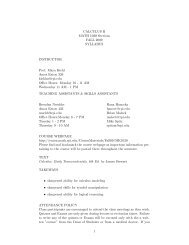ILOG CPLEX C++ API 9.0 Reference Manual
ILOG CPLEX C++ API 9.0 Reference Manual
ILOG CPLEX C++ API 9.0 Reference Manual
Create successful ePaper yourself
Turn your PDF publications into a flip-book with our unique Google optimized e-Paper software.
IloCplex<br />
public IloNum getDual(const IloRange range)<br />
This method returns the dual value associated with constraint range in the current<br />
solution of the invoking algorithm.<br />
public void getDuals(IloNumArray val,<br />
const IloRangeArray con)<br />
This method puts the dual values associated with the ranges in the array con into the<br />
array val. Array val is resized to the same size as array con, and val[i] will<br />
contain the dual value for constraint con[i].<br />
public IloNum getFormulationBigValue()<br />
The method getFormulationBigValue returns the current setting of the large<br />
value used to set a bound on otherwise unbounded expressions appearing in logical<br />
constraints. Such a value is sometimes referred to as Big M.<br />
By default, this value is 1e6. You can change that default setting by means of the<br />
method setFormulationBigValue.<br />
In order to transform a logical constraint automatically into an equivalent MIP<br />
representation, it is sometimes necessary to set a finite upper or lower bound on an<br />
otherwise unbounded term. When such a bound does not already exist, <strong>CPLEX</strong> uses the<br />
value returned by this method for that purpose. For example, consider the following<br />
disjunction (that is, or-statement):<br />
(x == 1) || (x 2)<br />
It is necessary to have an upper bound on x. If the upper bound on x is<br />
IloInfinity, <strong>CPLEX</strong> will use the value returned by<br />
getFormulationBigValue in the transformed representation of logical<br />
formulations.<br />
public IloNum getFormulationEpsValue()<br />
This method returns the epsilon value that is used to model strict relations. In order to<br />
model a strict inequality, such as x < b in a MIP, IloCplex uses x ≤ b - eps as a<br />
surrogate, where eps is the value returned by this method.<br />
public void getIIS(IloCplex::IISStatusArray cstat,<br />
IloNumVarArray var,<br />
IloCplex::IISStatusArray rstat,<br />
IloConstraintArray rng)<br />
If an LP model has been proven to be infeasible, this method can compute an<br />
irreducibly inconsistent set (IIS). The variables and range constraints in the IIS are<br />
returned in the arrays var and rng, respectively.<br />
<strong>ILOG</strong> <strong>CPLEX</strong> <strong>C++</strong> <strong>API</strong> <strong>9.0</strong> REFERENCE M ANUAL 61



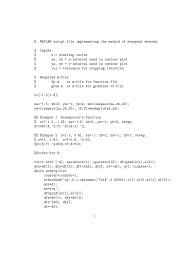

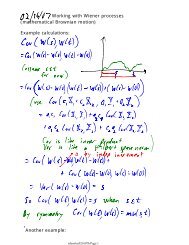

![MATH 1500 Sample Questions Exam 2 1. [3.7] A 10-ft plank is ...](https://img.yumpu.com/43861920/1/190x245/math-1500-sample-questions-exam-2-1-37-a-10-ft-plank-is-.jpg?quality=85)
